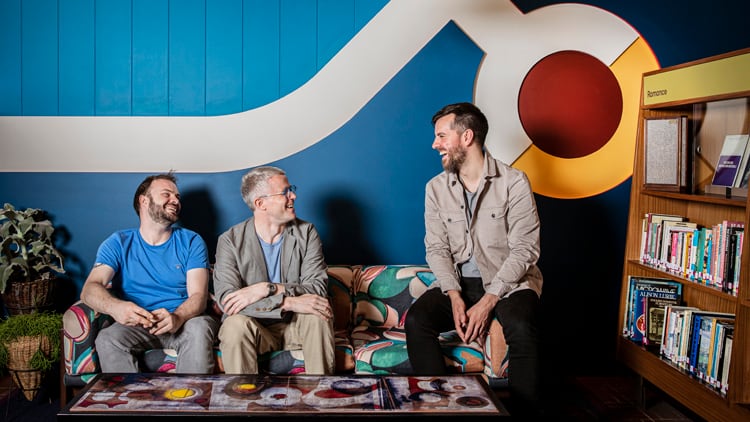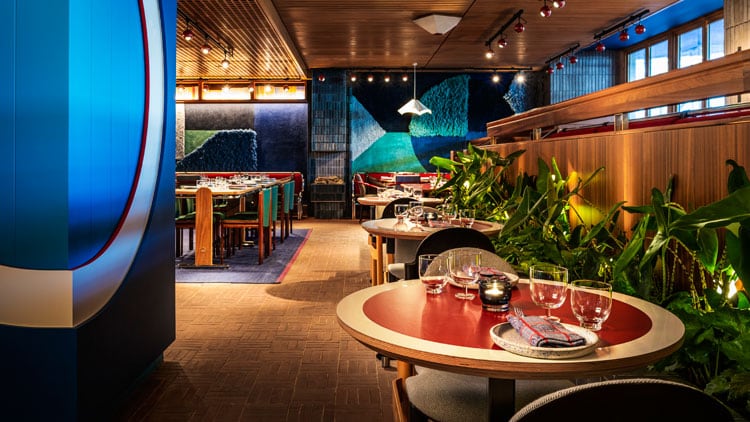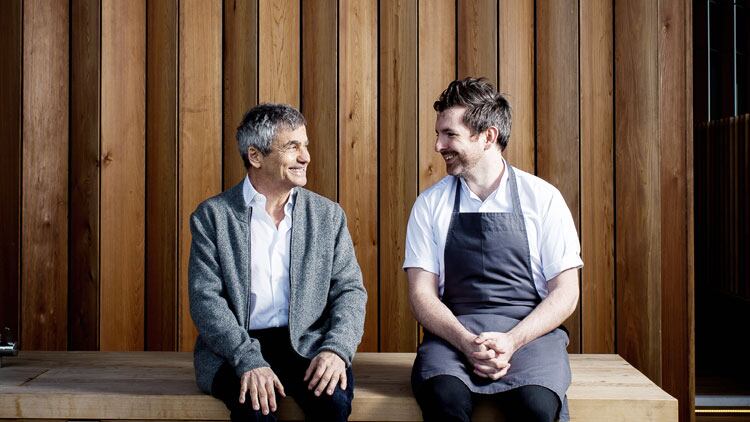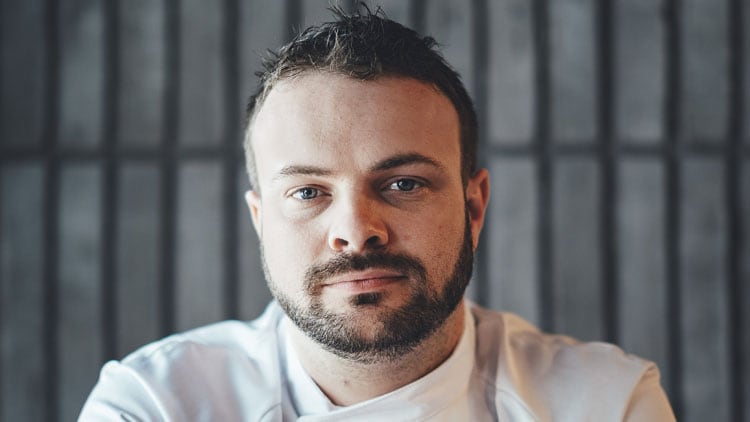The pill-shaped red lift that runs up the side of The Standard, London goes through a bathroom in one of the hotel’s suites, potentially giving its passengers an eyeful as they speed to its upper levels.
It’s a typically salacious statement for The Standard, the trendy US hotel chain that has courted headlines at its stateside properties with loos that are clearly visible from street level, exhibitionism-encouraging floor-to-ceiling windows in rooms and – most infamously – a four-seater toilet cubicle. The Standard is positioned as a hotel brand that likes to be a bit naughty (no Gideon Bibles here; the bedside tables are stocked with painkillers and condoms). The Ritz this ain’t.
Opened last month, its European debut is located opposite King’s Cross station and is shaping up to be as risqué as its older siblings across the pond. As well as the potentially eye-opening elevator ride, those who take a terraced room can have an alfresco bath overlooking the rather more conservative St Pancras Renaissance.
It’s not cheap but it’s certainly more accessible than most high-profile hotels, with small rooms available from as little as £155, although the more premium rooms with outdoor bathtubs cost around £700.
A far from standard hotel group
The first The Standard hotel was launched in Los Angeles in 1998 by US hotelier Andre Balazs. He has since opened five more, The Standard, Highline in New York’s Meatpacking district is the group’s most iconic.
Balazs – who on these shores is best known for Marylebone’s trendy Chiltern Firehouse hotel – is no longer involved, having gradually sold off his interests in the business over the past few years. Amar Lalvani now heads the group as CEO and, like Balazs before him, takes a keen interest in F&B, securing the talents of two of the UK’s most exciting chefs.
The man on the ground at The Standard, London is seasoned hotel operator Bruce Robertson, whose CV includes a long stint with legendary Scottish hotelier Ken McCulloch (Malmaison and Dakota Hotels), Conran and Partners and Soho House. The Glasgow-born civil engineering and geology graduate joined soon after The Standard obtained planning for the site around four years ago. Unusually, he has coordinated the design and construction side of the opening as well as operations.
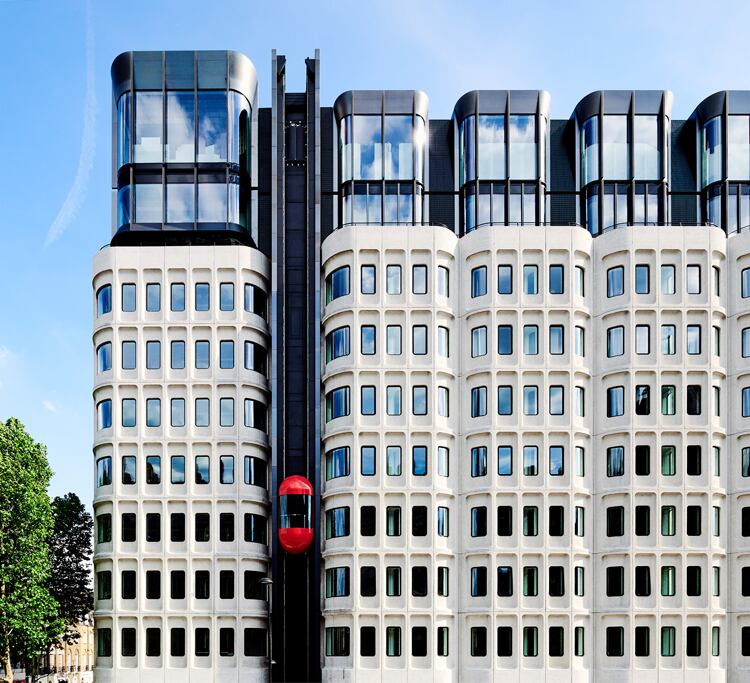
Robertson will move on a year or so after opening after the “metrics are stabilised” to oversee another opening (The Standard has around 15 projects in the works in locations including Paris, Lisbon, Milan, Bangkok, Mexico City and Chicago following a huge investment from Thai real estate giant Sansiri).
As an exponent of Brutalist architecture – he lives in the Barbican – Robertson is the right person to helm the project, which is located in the architecturally infamous Camden Town Hall Annexe. “It was built in 1974 and was beyond its economic use from the outset. The building was known as ‘the white elephant’, in fact the chief executive of the council once ran a bar on the eighth floor called exactly that. The site was a huge liability to the council,” says Robertson, who knows the building – which sports a Bansky daubing to the rear – better than most having attended “unofficial” parties within its unused floors.
With an architectural style that could politely be described as divisive, the building is not listed: every other bidder intended to knock it down and start again, a far cheaper option than restoring it. But The Standard has form for breathing new life into undervalued real estate.
“The bobbly hats on Instagram who are into the Brutalist style were glad we were preserving it, but there was a lot of apprehension about what we were going to do with it,” says Robertson. Made up from individual precast concrete panels, the existing eight-storey building’s facade has been cleaned and new slim-frame aluminium windows put in, significantly improving its appearance. The ground floor level of the building – which contains two of the hotel’s three restaurants – has been softened with a wooden facade.
Three new storeys have been added to the building by means of a stainless steel and glass panel extension. Two of the floors are for hotel bedrooms, with the top floor dedicated to the hotel’s flagship restaurant, with a roof terrace above scheduled to open next year. It’s a bold architectural statement, especially when juxtaposed with Gilbert Scott’s neo-Gothic masterpiece across the road.
Inside, the design pays homage to both The Standard, London’s location and the building, while referencing the transformation of the King’s Cross area. Designed by Shawn Hausman, the once-drab space where people used to issue parking permits has been completely stripped out and replaced with a vibrant new interior that has a busy, eclectic vibe that largely takes its cues from 70s interior design styles. In a nod to the ground floor’s former use, the lobby area contains a fully operational library for hotel guests. The result is a hotel that looks strikingly different to anything else in the capital.
Bristol’s finest
The intention is that The Standard, London will provide a platform for homegrown cooking talent, with the owners eschewing the oft-used tactic of bringing in a big ticket US chef to oversee proceedings.
“The Standard brings its DNA and unique perspective but it is intended to be a locals’ hotel, not an export,” says Lalvani. “The restaurants are the foundation for creating a vibrant local environment.”
The most-high profile is Peter Sanchez-Iglesias. The currently Bristol-based chef isn’t exactly up-and-coming – his flagship Casamia has held a Michelin star since 2009 – but at 33 he is young and regarded as one of the country’s most progressive and interesting chefs.
More recently, the easygoing and affable chef has shown an ability to manage pressure and run two venues very successfully, albeit in the same location. In 2015, he tragically lost his older brother and culinary collaborator Jonray to cancer just as the original Casamia was being relocated from the suburbs to central Bristol. Despite this, the reopening was a huge success and, a few months later, Sanchez-Iglesias opened the more casual Paco Tapas, which went on to also win a star in the 2018 Michelin guide.
Sanchez-Iglesias has been on The Standard team’s radar for some time. Balazs approached him for Chiltern Firehouse back in 2014 but while discussions were had, the honour went to Nuno Mendes. “It wasn’t right at the time,” Sanchez-Iglesias recalls. “Nuno was obviously a great fit and has gone on to do an incredible job. It’s funny because I never wanted to do a restaurant in a hotel. I thought it would end up being posh. It didn’t feel like us.
“What we’re doing here is professional but relaxed, and it’s also a self-contained space in which we can create our own little world.”
A perfect ten?
Accessible from street level via the red lift, the restaurant is located on the 10th floor and is expected to open in early October (this looks easily achievable, with most of the fixtures and fittings in place when Restaurant was given a sneak peek last month). The name of the restaurant is under wraps ahead of a big reveal later this month and Sanchez-Iglesias is under instructions from on high not to give too much information away.
Yet his open nature and enthusiasm for his first London restaurant makes for a clearer picture of the operation than was perhaps intended. The restaurant will share much of the same DNA as Paco Tapas but will look further afield than Spain for inspiration.
“There is a connection with Spain, but I would not call it a Spanish restaurant,” he explains. “We’ll also be looking at Mexican food. I guess it’s ‘Spanish-related’, with a bit of my culture and how I like to cook mixed in. Like my other places, we will be championing great quality British produce.”
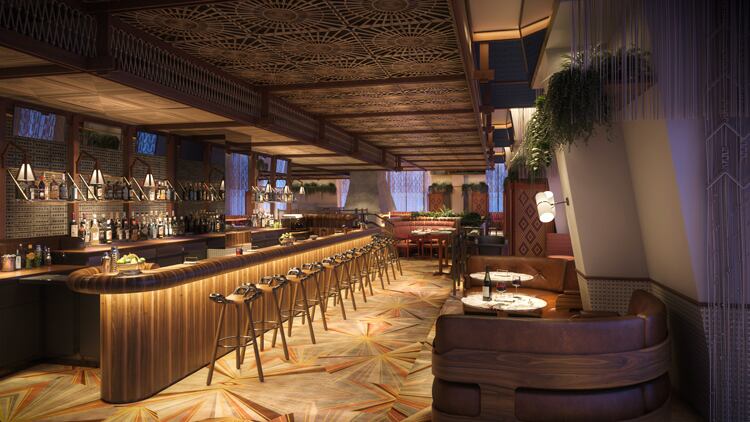
Still in draft stage, the menu is designed for sharing and is split into sections including para picar, seafood served on ice, agachile (Mexico’s answer to ceviche), tacos, salads, vegetables and meat and fish.
Key dishes include Paco Tapas’ famed jamon croquettas; a vegetarian take on paella made with mushrooms; veg cooked slowly in embers; a caviar-covered tortilla that looks likely to go down well on Instagram; and a Caesar salad for two prepared tableside (the dish was invented by an Italian expat in Tijuana, Mexico).
Prices will be comparable to Paco Tapas, with it possible to have a light meal at a relatively affordable price. However, the hotel will be hoping diners opt for a more indulgent experience by going for the premium dishes with a heftier price tag (the grill section is big on wallet-lightening ingredients such as turbot, gambas rojo, langoustine and scallops). As at Paco Tapas, the centrepiece of the semi-open kitchen and main cooking platform will be a grill, in this case a US-made parilla.
Also designed by Hausman, the 130-cover space has panoramic floor-to-ceiling windows that provide views of the St Pancras Renaissance’s intricate roof immediately to the north and surprisingly uninterrupted views of the London skyline from all other directions. Despite the great aspect, the main restaurant space has been sunken, and the tables will be angled inwards rather than outwards to put the emphasis on the dining room. Like the rest of the hotel, the space is refreshingly offbeat and has an eclectic design inspired by 70s fashions, especially those from California (the loos have beaded curtains and the ceiling tiles are made of rattan).
“It’s going to be a pretty wowing experience,” says Sanchez-Iglesias. “It’s decadent. It’s a room to have a good time in.”
Star player?
Josh Green, who has worked at Casamia for more than 10 years, latterly as its development chef, will be the restaurant’s head chef. With a safe pair of hands behind the stove and a brace of Michelin-starred restaurants back home, most would assume that Sanchez-Iglesias himself will only be dipping in and out of London after the launch period. But that isn’t the plan. Both the chef and his new partners are clear that they won’t ever accept a phoned-in London satellite. Sanchez-Iglesias is moving to the capital for at least a year – he is currently viewing flats – and will be in the restaurant “pretty much every day”. Bringing a Michelin star to the 10th floor of The Standard, London appears to be part of his brief, too. But where does this leave Casamia? Won’t he and his development chef taking a step back from the flagship jeopardise its success, or at the very least press the pause button on its progression?
“This will strengthen the foundations of what we do in Bristol,” he says, shrugging off the notion. “Casamia is my vision of the ultimate restaurant. It’s not a business model. It needs money and infrastructure behind it to progress. We want three Michelin stars and I believe it will happen, but it’s going to take time. I have absolute confidence in my head chef Jim Day and the rest of the team there.”
Raising awareness of what he’s doing in Bristol appears to be a key reason for signing up to the deal, which he describes as a partnership that has not required him to make an investment in the restaurant (all the IP is owned by The Standard, too).
“If you want to get people in your restaurant these days you need to be on television. But I don’t want to do cookery shows and competitions. It’s just not my thing,” he says. Indeed, the chef hasn’t done anything significant on the small screen since appearing on, and ultimately winning, Ramsay’s Best Restaurant with Jonray nearly 10 years ago.
Executive decision
Sanchez-Iglesias is not the only fresh-faced chef The Standard is placing its faith in. Overseeing the two restaurants on the ground floor of the hotel alongside breakfast, room service and a simple all-day offering in the lobby is 29-year-old chef Adam Rawson. With a wide-ranging CV that includes everything from trendy burger chains to cutting edge Michelin-starred restaurants, Rawson is not a typical candidate for a hotel executive chef role. While he has some hotel experience having worked at The Grove in Watford and at Claridge’s early on in his career, his most formative years were spent at more progressive establishments including Eastside Inn under Bjorn van der Horst, Hibiscus under Claude Bosi and – most notably – Viajante under Mendes.
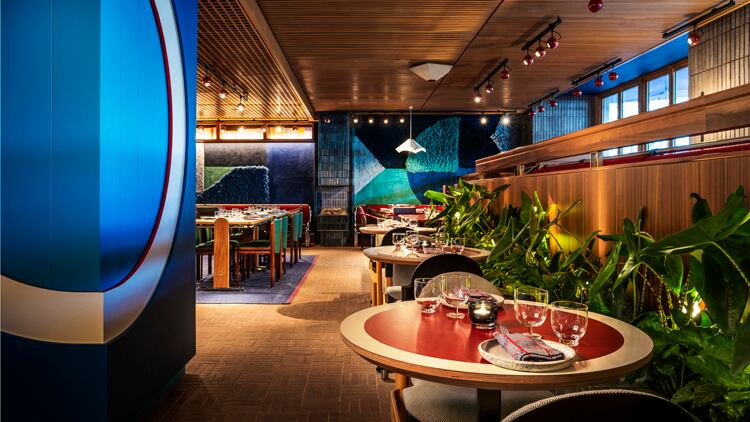
After doing his time in top-end kitchens his career took a less conventional turn, with a number of senior roles at quality but casual branded groups including new wave burger joint Lucky Chip and the Peruvian-inspired Pachamama Group. At the latter he was named Chef of the Year at the Young British Foodies awards. Soon after the win, he travelled extensively – destinations included Mexico, Italy, Japan and Portugal – and ran a number of London pop-ups that explored the regional food he’d encountered abroad.
“I’ve packed a lot in,” says Rawson when quizzed on his impressively diverse career. “Nuno is my biggest influence. His ethos of using produce and influences from all over the world totally changed how I think about food. As soon as I feel I’ve learnt what I can, I like to mix it up with something completely different. I guess that’s what brought me here.”
Doubling up
Launched last month, the two restaurants are in close proximity but are poles apart stylistically. Isla, which is named after the Scottish island, is a ‘light protein-focused’ restaurant that draws inspiration from Britain’s island geography, while bar-cum-restaurant Double Standard majors on rather less virtuous comfort food. Isla is integrated into the lobby area but demarcated with a striking design that features deep blues and greys and turquoise textured fabric wall panelling offset with bright red banquettes.
Looking out onto The Standard, London’s impressive 6,000sq ft terrace, which features a retractable roof, its tight sharing menu is split into fish, meat and vegetables (the former two have four options apiece and the latter has nine) alongside a largely natural wine list. The selection includes broccoli with yoghurt, almonds and mustard; Iberico pork with chimichurri and daikon; aged beef chop with green peppercorn sauce; salmon with beets and horseradish; turbot with sea aster and wild fennel; and a risotto-like dish made with Jerusalem artichoke and Swiss cheese.
An area unto itself, Double Standard is a much larger space than Isla and feels like a very premium hybrid of a US diner and an English pub. The Standard, London refers to it as ‘dive bar’, a tag somewhat at odds with its Hermes curtains and carefully considered aesthetic, even if elements of the design do nod to drinking dens (Tube stations were another key influence). Key design features include banquettes shod in shiny crimson leather, a beautiful tiled floor and bar, dark wood panelling and leather and felt ceiling tiles.
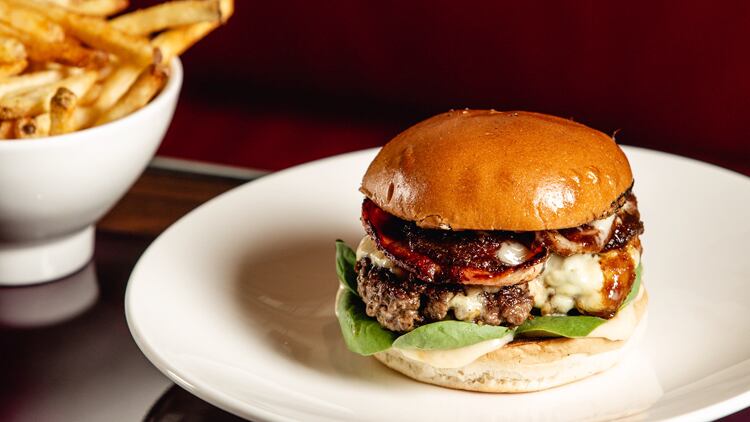
The principle menu item is inevitably the burger, which Rawson has already tested in both the US and Japan via a series of pop-ups organised by his new employer. The burger is ‘semi-smashed’ before being briefly steamed under a cloche, a technique influenced by his time at Lucky Chip (the signature burger – £14 – involves bacon, stilton, Branston pickle ketchup and truffle aioli). Other menu items include hot dog sliders with pickle sauce; fish and chips with fennel tartare, mushy peas and curry sauce; pork chop with roasted pineapple and HP gravy; mac ’n’ cheese with black truffle; and lemon andlime meringue pie.
“It’s the sort of stuff you want to eat when you’re drinking,” says Rawson. “I’ve designed the menu so it works for groups while still being suitable for someone who wants to come in on their own and smash a burger. The offer fits in well with the area. There are surprisingly few places that do this sort of food well round here.”
Given Rawson’s experience, it’s hard to think of a young chef more qualified to deliver these two very different restaurants. He is hungry to make his mark at the hotel and clearly wants to be known for more than just his (brilliant) burger, with Isla in particular serving an ambitious and wide-ranging menu that’s based on high-quality and carefully sourced ingredients. There’s even a fermentation program.
But with a kitchen that’s in operation 24/7 and responsibility for the room service menu (essentially a heavily edited version of Double Standard’s) and a lobby menu, the young chef has a lot on his plate. “I feel good about it,” he says in his calm and confident manner. “To be honest, I did not enjoy my time working in hotels the first time round. It’s a very different ball game to working in restaurants.
“But I’m finding it interesting here. I want to create really cool spaces that are destinations in their own right. That’s why I’m here. They did not want to have a typical hotel offering so they have chosen a non-typical chef. The Standard is all about flipping things on their head, which is exactly what we are doing here.”
Isla looks likely to be the biggest challenge yet for Rawson. Given The Standard, London’s keenness to position its three restaurants as destinations in their own right, the decision to have Isla spilling into the lobby is an odd one. As an employee, Rawson appears to have been closely briefed on the food’s direction while Sanchez-Iglesias looks to have been given a bit more creative leeway, at least in terms of the food menu (a third party is handling much of the mezcal-focused drinks program).
24-hour party people?
In keeping with its positioning as a hotel for hedonists, The Standard, London intends to serve food later than most hotels, with Sanchez-Iglesias’ place on the 10th floor likely to operate late into the night. Lalvani was apparently recently appalled that there was nowhere open in Soho when he arrived in London off a late flight.
It will be interesting to see how this goes: the absence of a 24-hour dining scene in the capital is more due to cultural issues and haphazard implementation than licensing problems. Perhaps The Standard, London will be the brand that finally gets it right.
The Standard, London is opening amid a flurry of US investment. This year has and will see the launch of a number of premium hotels pitched at a broadly similar demographic and which have also attracted chefs you wouldn’t typically associate with hotels. They include Manhattan Loft Gardens in Stratford, with former Chiltern Firehouse head chef Patrick Powell heading up its flagship restaurant, and Great Scotland Yard Hotel in Westminster, which has Robin Gill overseeing the menu.
Not only that, it will face further competition from a close US counterpart next year when the equally trendy The NoMad London opens in Covent Garden in the grade II-listed building known as The Bow Street Magistrates’ Court and Police Station – also marking NoMad’s first presence outside of the US.
With its global reputation and prominent location, The Standard, London looks well placed to succeed. And while Robertson acknowledges the challenges that come with an increasingly saturated market for upmarket hotels and their restaurants, he’s also quietly confident that The Standard, London’s offering will cut through the noise.
“The boutique market has matured. Expectations are higher and higher. The trick is to market the restaurants as independent entities that just happen to be in a hotel,” he says. “When restaurants in hotels become merely the canteen for the rooms, you’re going to struggle to sustain them. It’s unusual to find a hotel that has a queue outside every outlet decades after it has opened, but that’s the case with The Standard.”

Adam Rawson on the kitchen kit that makes Isla and Double Standard tick
The kitchen that services Isla and Double Standard is located on the first basement level of the building. It’s a tight-proportioned space given the size of the operation above, with one main line, one larder kitchen and one pastry kitchen servicing both restaurants alongside a lobby menu and room service.
“The advantage is that it’s manageable. I can see everything that’s going on, which is rarely the case in hotel kitchens, which are often separate areas all over the hotel. Each section makes dishes for both Isla and Double Standard. It’s designed as a kitchen for one restaurant, but we’re making it work. It’s fabricated to an amazing spec, too.
The kit we have is amazing,” says executive chef Adam Rawson, who joined the team at The Standard, London just after the kitchen design had been signed off. The food is run to Double Standard and the lobby via the stairs but Isla is serviced by dumb waiters.
The key piece of equipment in the kitchen is a large bespoke Ambach cooking suite. The modular equipment within it includes three planchas, two lots of four burners, one French griddle, one pasta boiler, two ovens and a fryer.
Rawson has some specialist kit including a Thermomix, waterbaths and a five-litre capacity Vitamix. He’s also running a fermentation program for Isla, which requires dehumidifiers, heatmats, temperature probes and fermentation buckets with grommets. “It’s pretty low tech. The aim is to keep everything at about 23 degrees,” he says. “We’re not trying to be too technical. We’re cooking good food using the right tools. The food offering is quality ingredients cooked nicely, we don’t need to over-process it.”
Kit parade
◆ Bespoke Ambach cooking suite ◆ Rational VarioCooking Centre ◆ Lainox combi-ovens ◆ Sveba Dahlen bread ovens ◆ Thermomix TM5 Vitamix Waterbaths ◆ Temperature monitoring equipment ◆ Heat mats
Nisbets can help keep your house in order: visit inplace.nisbets.co.uk

